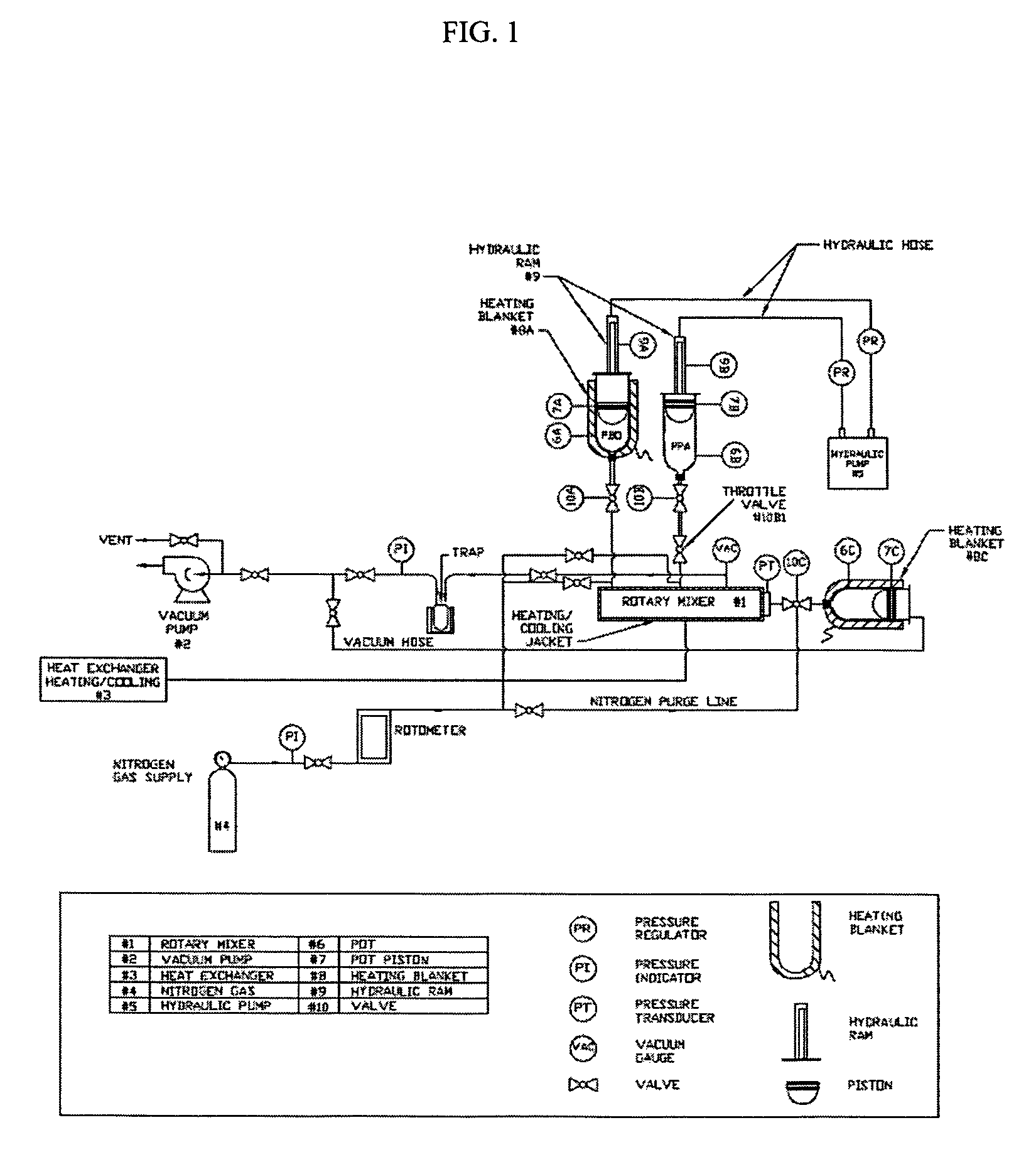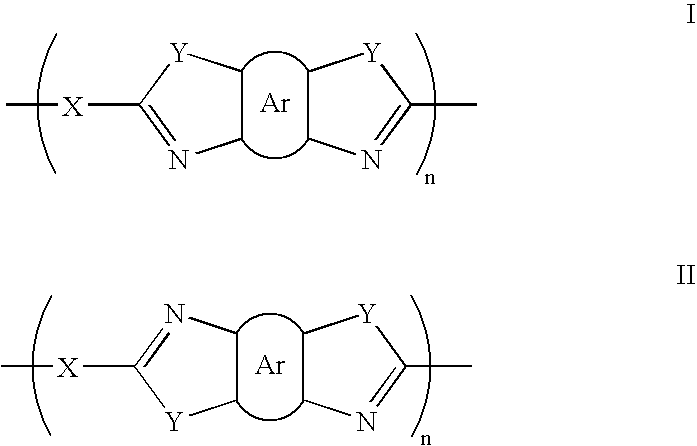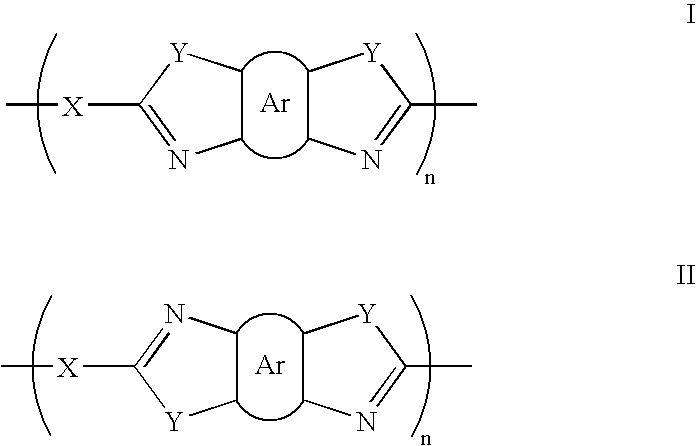Dilute solutions of lyotropic liquid crystalline polymers, methods of making same and compositions prepared from same
a technology of liquid crystal polymer and lyotropic liquid, which is applied in the direction of sustainable manufacturing/processing, final product manufacturing, electrochemical generators, etc., can solve the problems of spefcs not yet commercialized, multiple environmental problems of powered internal combustion engines, and the inherent limitations of membrane and electrode assemblies of today's leading membrane and electrode assemblies
- Summary
- Abstract
- Description
- Claims
- Application Information
AI Technical Summary
Benefits of technology
Problems solved by technology
Method used
Image
Examples
example 1
Dilution of 14.6% PBO / PPA Dope to 8.0% PBO / PPA Dope
[0106]Referring to FIG. 1, PBO polymer dope is supplied by Toyobo Co., Ltd of Tokyo, Japan as a 14.6 weight % PBO in PPA mixture in stainless steel vessel 6A containing approximately 10 pounds of polymer dope. The vessel 6A has a 1 inch NPT thread at one end and a 5 inch domed piston 7A with two sealing “O” rings to form a gas tight seal within the body of the container. At the chemical plant the polymer dope which is at a temperature of approximately 120° C. is forced under pressure directly from the sealed polymerization process into the 1 inch diameter fill / discharge end of vessel 6A forcing the piston 7A back until the vessel is completely filled (piston 7A is pushed to the top of the vessel 6A / limit of its travel. When completely filled the vessel 6A is then capped at the fill / discharge end with a 1 inch diameter pipe cap to form a gas tight seal. The viscosity of the 14.6% PBO / PPA dope at room temperature is solid or very simi...
example 2
Dilution of 14.6% PBO / PPA Dope to 3.0% PBO / PPA Dope
[0113]An isotropic PBO dope having 3% PBO in PPA by weight was prepared from a 14.6% nematic phase PBO dope using the dilution method and apparatus recited in Example 1 and depicted schematically in FIG. 1.
[0114]The amounts of reagents and process times were modified as follows: 14.6% dope (1.06 kg) was introduced over 15 minutes with an additional 10 minutes of mixing to complete opening of the dope prior to addition of the diluent. Polyphosphoric acid (PPA; 2.27 kg) was added at a rate of 114 g / minute and diluted dope was mixed for 1.5 hours after complete addition of the PPA.
[0115]The diluted dope was in an isotropic phase and had 3.19% by weight PBO in PPA. The measured intrinsic viscosity was 18.5 indicating less than a 5% reduction in molecular weight during the dilution process.
example 3
Dilute PBO Dope Having an Ion-Conducting Polymer Additive
[0116]A solution of poly(styrene sulfonic acid) (PSSA; 80.5 g) was prepared in poly(phosphoric acid) (PPA, 1530 g). This solution was mixed with a 14.6% solution of PBO in PPA (943 g) using a high shear mixer to form a 7% solution according to the method described in Example 1. Diluted dope solution was shaped into a film in a hydraulic press under high pressure (500 psi). The film was then coagulated and dried at 175° C. under a dry dinitrogen atmosphere. The film was then tested for conductivity at 150° C. in dry conditions (low relative humidity; no pressurization) using a four-point conductivity measurement. Elemental analysis was also performed to determine the actual ratio of PBO:acid in the dried film.
[0117]Table 2 below shows the data from this films as compared to a comparative example prepared by imbibed the ion-conductive material into a preconfigured microporous PBO membrane (See, the examples in U.S. Pat. No. 6,24...
PUM
| Property | Measurement | Unit |
|---|---|---|
| weight percent | aaaaa | aaaaa |
| weight percent | aaaaa | aaaaa |
| weight percent | aaaaa | aaaaa |
Abstract
Description
Claims
Application Information
 Login to View More
Login to View More - R&D
- Intellectual Property
- Life Sciences
- Materials
- Tech Scout
- Unparalleled Data Quality
- Higher Quality Content
- 60% Fewer Hallucinations
Browse by: Latest US Patents, China's latest patents, Technical Efficacy Thesaurus, Application Domain, Technology Topic, Popular Technical Reports.
© 2025 PatSnap. All rights reserved.Legal|Privacy policy|Modern Slavery Act Transparency Statement|Sitemap|About US| Contact US: help@patsnap.com



